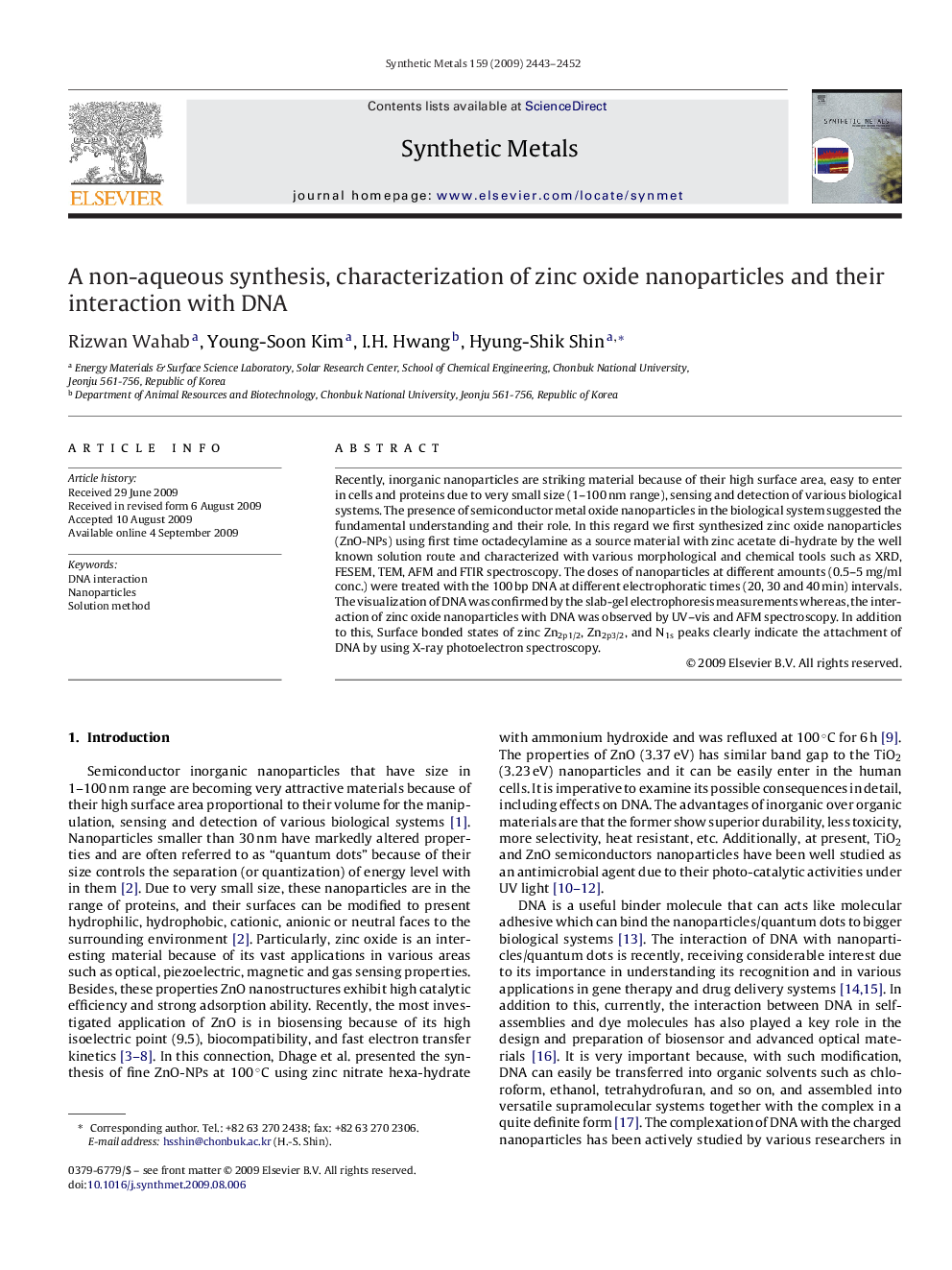| Article ID | Journal | Published Year | Pages | File Type |
|---|---|---|---|---|
| 1442750 | Synthetic Metals | 2009 | 10 Pages |
Recently, inorganic nanoparticles are striking material because of their high surface area, easy to enter in cells and proteins due to very small size (1–100 nm range), sensing and detection of various biological systems. The presence of semiconductor metal oxide nanoparticles in the biological system suggested the fundamental understanding and their role. In this regard we first synthesized zinc oxide nanoparticles (ZnO-NPs) using first time octadecylamine as a source material with zinc acetate di-hydrate by the well known solution route and characterized with various morphological and chemical tools such as XRD, FESEM, TEM, AFM and FTIR spectroscopy. The doses of nanoparticles at different amounts (0.5–5 mg/ml conc.) were treated with the 100 bp DNA at different electrophoratic times (20, 30 and 40 min) intervals. The visualization of DNA was confirmed by the slab-gel electrophoresis measurements whereas, the interaction of zinc oxide nanoparticles with DNA was observed by UV–vis and AFM spectroscopy. In addition to this, Surface bonded states of zinc Zn2p1/2, Zn2p3/2, and N1s peaks clearly indicate the attachment of DNA by using X-ray photoelectron spectroscopy.
